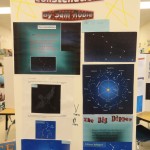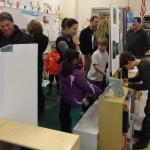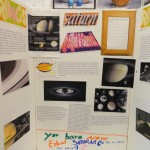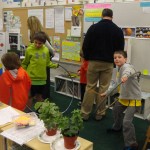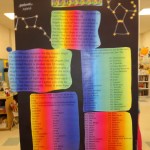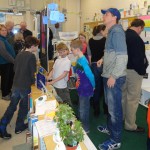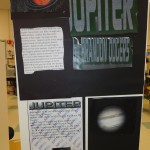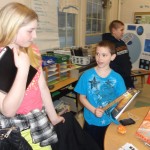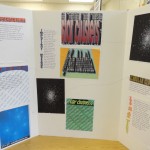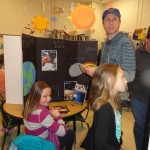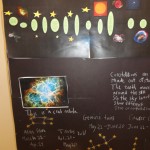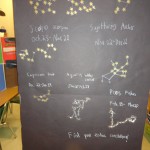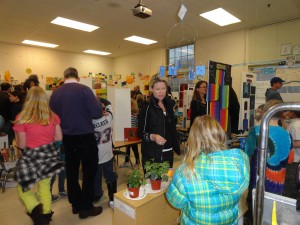 We had fun learning through our reading, writing and researching about space. Here are some of our thoughts.
We had fun learning through our reading, writing and researching about space. Here are some of our thoughts.
My favorite part was putting my constellations poster on display. It was interesting that the Big Dipper is not a constellation. There are 88 constellations. There are so many. I hope people noticed how much work I put into my display.
It is fun and I learn. The Milky Way can hold up to 400 billion stars. The Milky Way is big. That it has 400 billion stars.
The best part was gathering information for my trifold. The Kuiper Belt is 20 to 200 more massive compared to the Asteroid Belt. The Oort Cloud is outside around our solar system. The Hale-Bopp comet has three tails.
Making the trifold and doing research it was so fun! Kuiper Belt Objects are called KBO’s. Pluto was downgraded in 2006. Pluto has three moons.
Finding out about the dark spot on Neptune. Neptune has a 165 year orbit around the Sun, but it only has a 16 hour day. All the amazing pictures and facts.
I had a lot of fun learning all about Mars like the volcano, moons and water. There are two moon. I think that is very cool. There is water on the top and bottom and that was cool because I never knew that. Most people think there is only one moon called Demios, but there are two: Phobos and Demios.
My favorite part of the museum was sharing with everyone. The pressure at Uranus’ core is 8 million bars. Uranus is the only planet found by telescope. These are my favorite facts. I hope people learn something new and enjoyed my display – also all the the displays.
The best part of the research was working with my friend and learning about Saturn. The two most interesting facts I learned about Saturn were that Saturn’s core is the size of Earth and that Saturn’s rings are organized by the first seven letters of the alphabet. Saturn is interesting. Even thought Saturn is a gas giant it has six layers.
I had a lot of fun learning with Garrett about Saturn. Saturn’s moon, Titan, is bigger than Mercury. The tiny core of Saturn is the size of Earth. The facts and the trifold and we got to work together.
The best part of the research was getting to put the trifold together. The two most interesting things I learned were there 12 people gone to the moon. I thought only Neil Armstrong went to the moon. The moon can show up in different colors. The moon can be orange. I hope people noticed that it worked on it to impress people.
The easiest things for me to do were: the research, planning and making my display and the typing. Lightning is hotter than the Sun. I was amazed. I didn’t know that before. The sun will die in about 5.6 billion years. I was amazed because I thought is would be shorter. They noticed the research and how I put the display.
I like making Venus – the little planet for my poster. I like that its a
planet that rotates backwards compared to all the other planets. I think it’s a cool display and it had cool facts on it.
I like making my trifold and seeing how great everybody else’s was. I think the most interesting thing I learned is that there is an Asteroid Belt. I just thought asteroids were flying out in space. I liked by 3-D asteroid. I put two pieces of black paper together with tape nad made a slot in the tape. I put a gray oval through the slot and it was 3-D.
In my research the best part was getting the information. One of the most interesting pieces of information was that there are 88 constellations. It is amazing how many there can be. There’s probably thousands of stars making them. Another one of the most interesting pieces of information is that the Big Dipper is not technically a constellation. It’s part of one called Ursa Major. During our museum I hoped that people would notice my hard work and my information.
I liked making my poster and learning new stuff about black holes. The first most interesting fact about black holes is you can escape from them.
The best part about the inquiry was learning new information. I was excited to learn that a meteorite crashed in Russia while I was learning about it. A meteoroid goes 2,500 time faster than the fastest baseball pitch. I thought that was exciting. How large is the second largest meteoroid? It was 15.5 tons.
I liked all of my research. I liked going on the computer and with books and building my model. Jupiter is 480 million miles from the Sun. Jupiter in named after one of the Greek Gods. I liked sharing all my work and my model of Jupiter.
